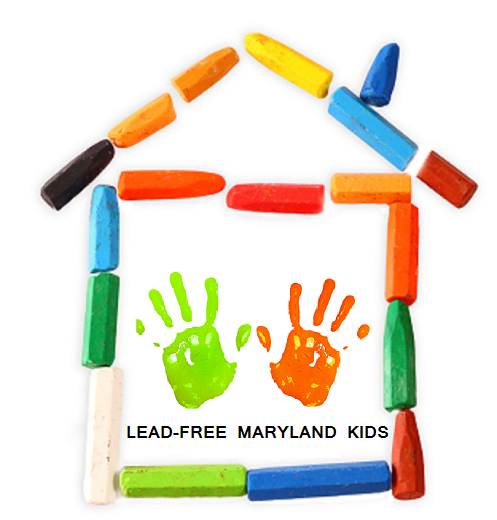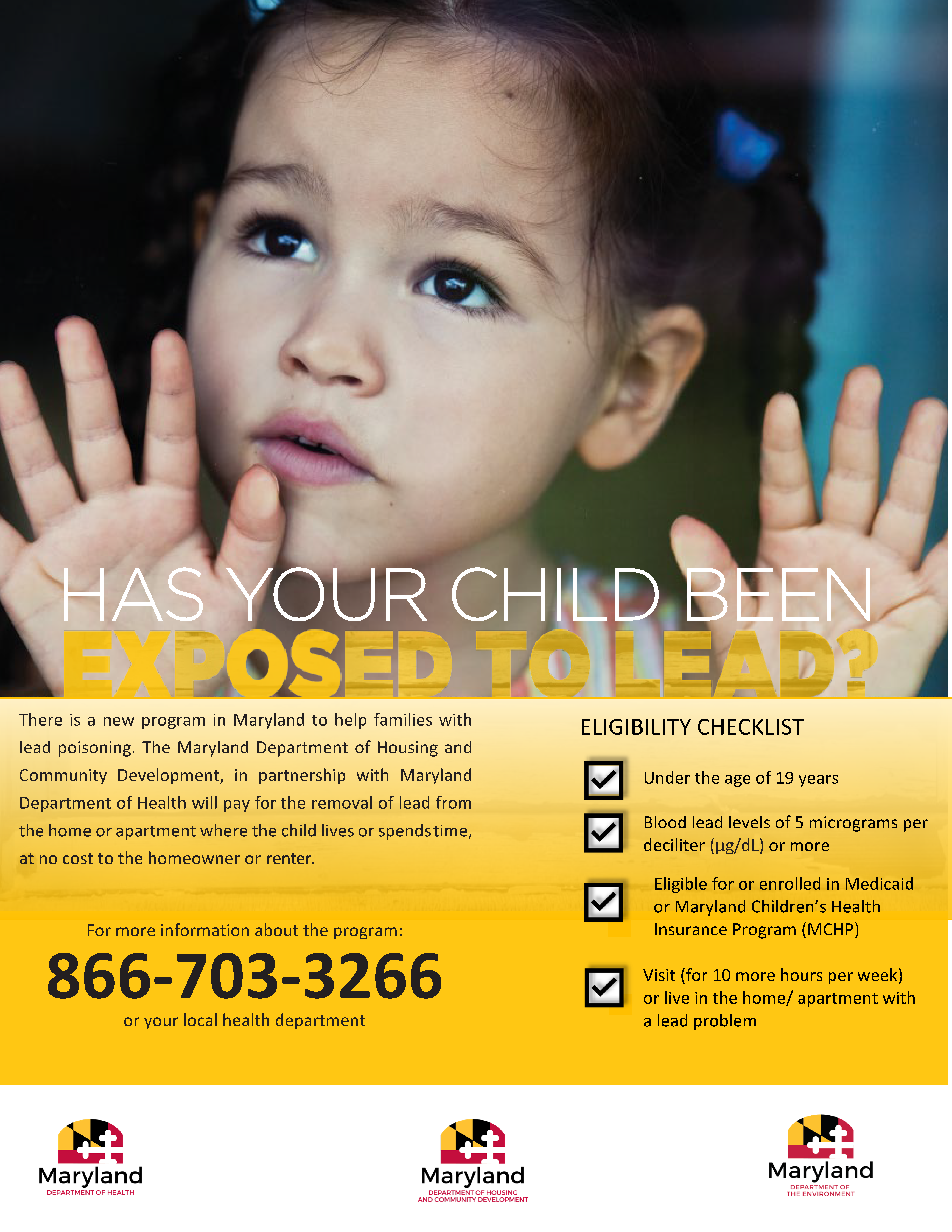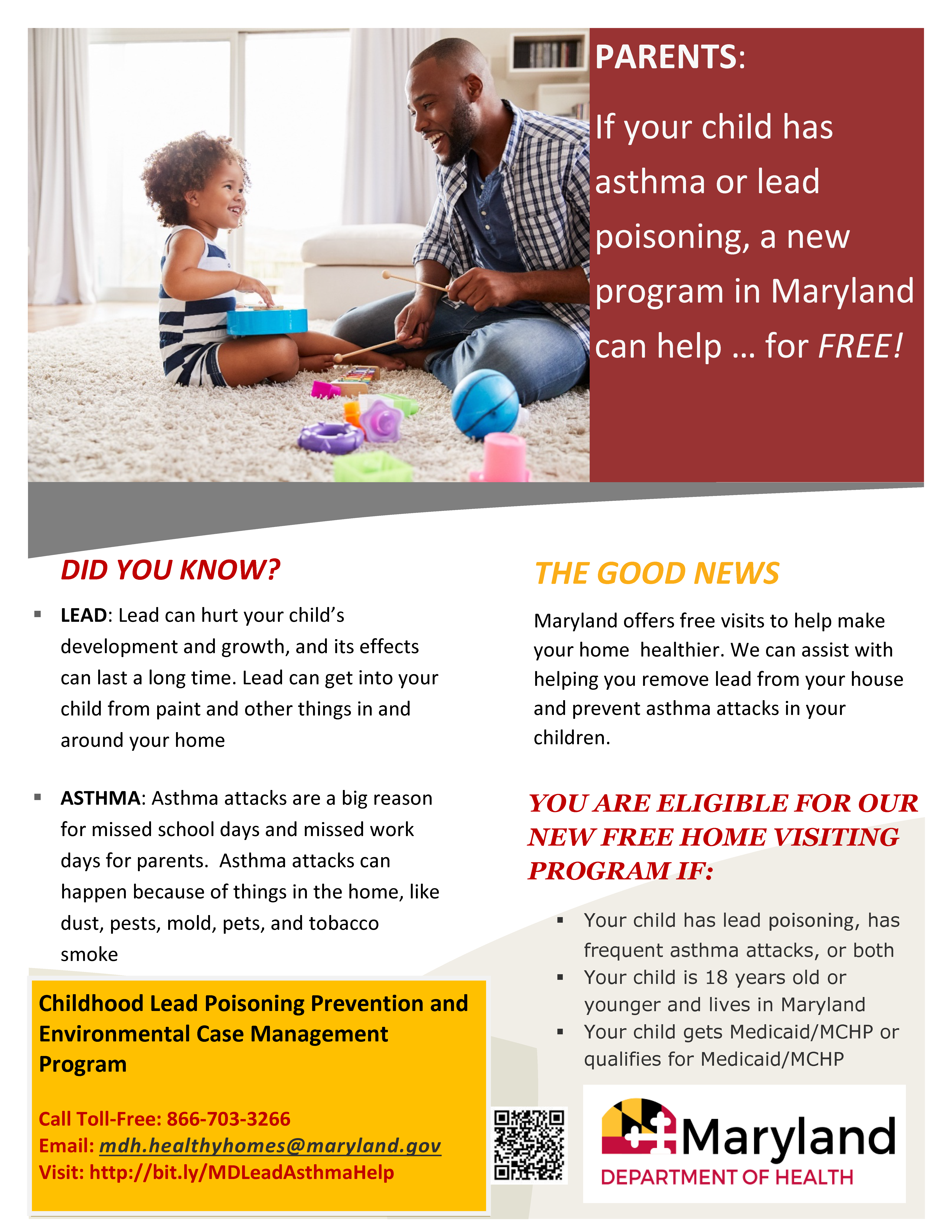What is Lead Poisoning?
Lead poisoning affects many children younger than 6 years old in Maryland. Lead can harm a child’s brain, causing lifelong learning and behavior problems.
Lead dust in the home is caused by chipping, peeling, flaking or deteriorating lead-based paint and can be found in any home. Lead can also be found in toys, jewelry, and other consumer products and may be brought home from some jobs. For more information on how to protect your family from lead, visit
http://www2.epa.gov/lead/protect-your-family#sl-home.
Lead poisoning has decreased over the years, but there is no safe level of lead. The only way to know if a child has been exposed is a blood test.

What is New in Lead Poisoning Prevention in Maryland?
*Effective October 1, 2019, the legal definition of an elev
ated blood lead in Maryland is the same as the clinical definition (5 mcg/dL). The Maryland Department of the Environment has new regulations for blood lead reporting and apartment owners.*
New Home Visiting and Lead Abatement Programs for Families
Maryland has two new programs for families with a child exposed to lead:
The Healthy Homes for Healthy Kids Program removes lead hazards from the home at no cost.
The Childhood Lead Poisoning Prevention and Environmental Case Management Program provies in-home services to reduce exposures to lead and to asthma triggers.
Learn more about these programs, including eligibility criteria and availability in your jurisdiction.



Universal Testing for Children at 12 and 24 months
Since 2016, all parts of Maryland are considered 'at risk' for lead exposure, for children born on or after 1/1/15. As a result, all children born on or after 1/1/15 must be tested for lead at ages 12 and 24 months. Children born before 1/1/15 should continue to be managed according to the 2004 Lead Targeting Plan (which defines specific areas of the State as 'at risk'). Read More

